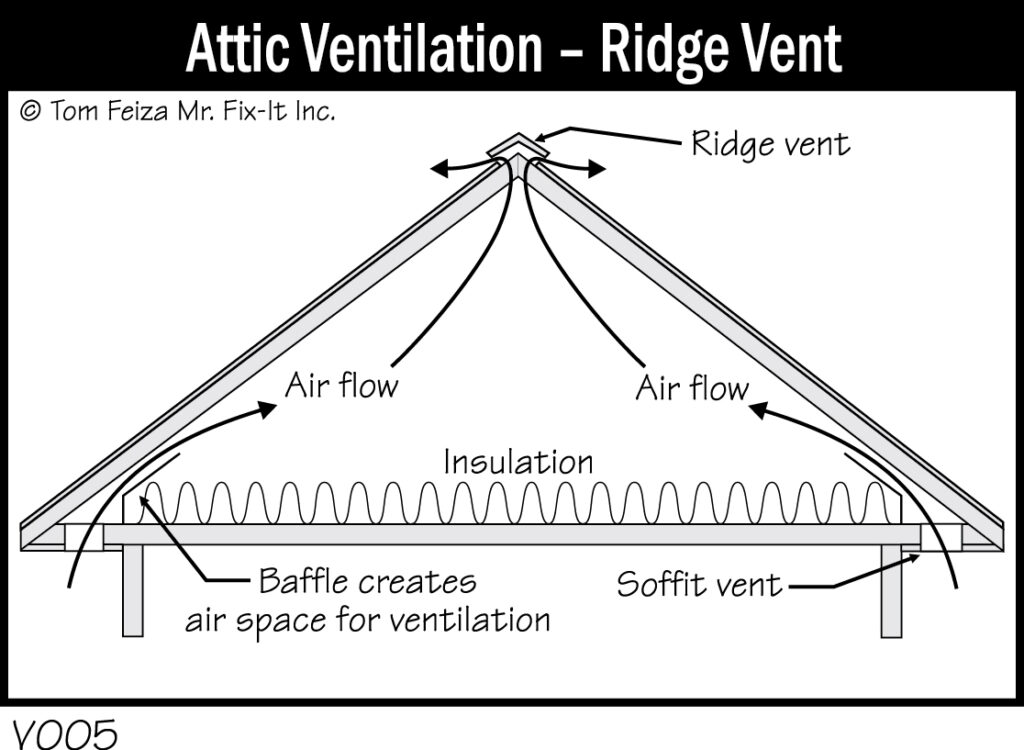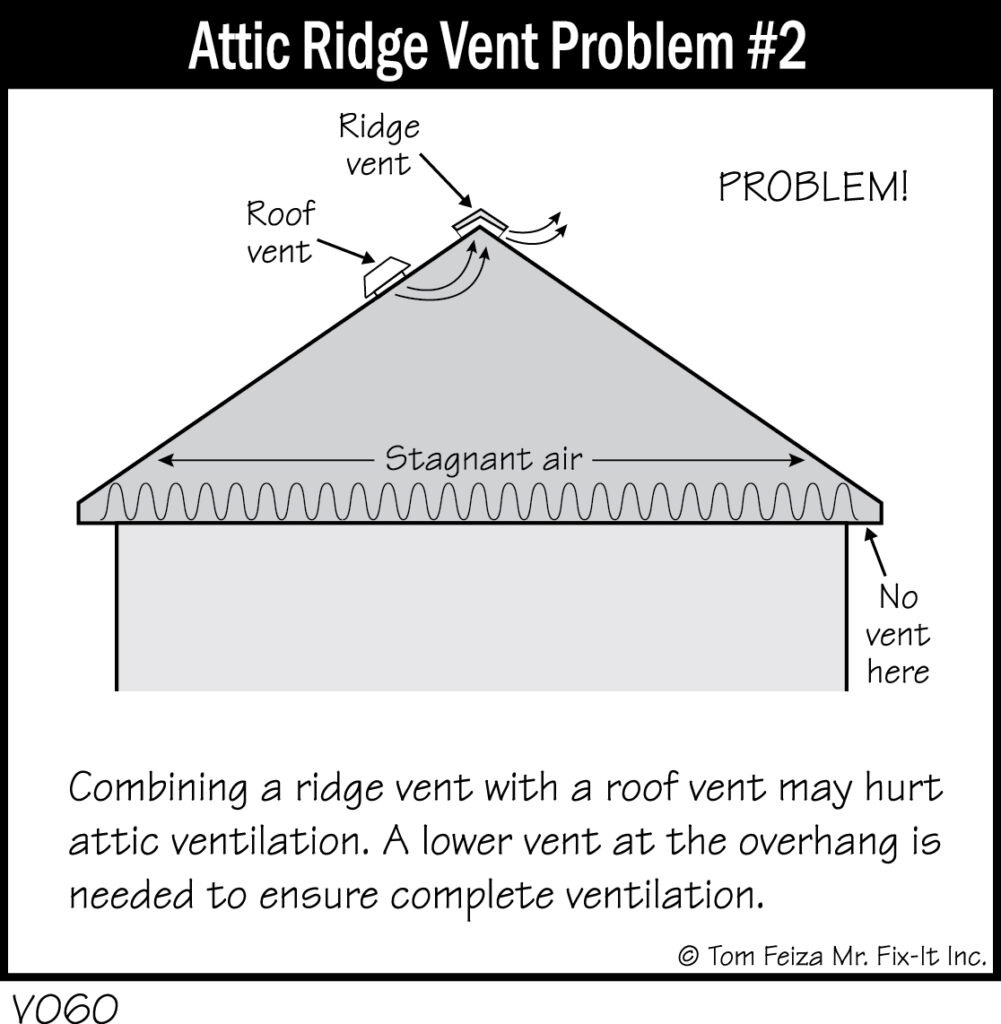By Tom Feiza, Mr. Fix-It, Inc.

We all know attics are vented to remove heat and moisture. Right? At times we see powered attic ventilation fans. These fans suck air out of an attic. How often are they installed correctly? Are they a good idea?
Rule of Thumb, History
For many years we understood attics should be evenly ventilated. About half of the static vent openings should be evenly spaced near the ridge of the roof and about half should be evenly spaced near the soffits or overhangs. The idea is to create an even flow of air throughout the attic.
Types of Vents
We saw the “roof vents” (can vents, static vents, box vents) high near the ridge of the roof for the upper vents. In recent years this type of roof vent has been replaced with a “ridge vent”. A cut through the ridge of the roof covered with a mesh or plastic frame and shingles. (See V005)

With a static vent system wind or heat moves air from the lower vents to the upper vents and removes heat and moisture from the attic. With a simple roof design, this was quite easy to accomplish. We also saw a lot a gable end vents in older homes and these worked in combination with soffit vents.
Venting Problems? Add a powered Attic Ventilation Fan
With more complicated roof designs and tighter homes that trap moisture, attic ventilation became an issue. The need to “cool” the attic for air conditioning also became a concern. Solution – the powered attic ventilator, a fan that sucks air from the attic. (V004). The fan is controlled by heat or humidity.

Solution BUT, most were installed wrong! (see Picture Attic Fan with Ridge Vent). When installing a powered attic ventilator all the upper vents in a roof must be closed. Yes, all the upper vents must be closed off. Look at the picture of the attic fan. It sucks air out of the attic from the adjacent ridge vent opening and the attic is not ventilated.
When there are roof vents or gable end vents, they also must be closed for an attic fan to vent an attic properly. Illustration V060 displays the issue. The fan draws air from the adjacent roof vent and the attic is not ventilated.

The takeaway
During your inspection note powered attic ventilators and note the installation – there may be an issue to be recorded. In many cases, the attic fan is incorrectly combined with other upper vents. If the attic is performing – no moisture issues, the best recommendation may be to turn the fan off. But that is not your call.
